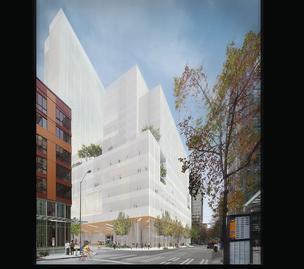
Seattle’s real estate market is back, which means big projects in downtown. But as developers begin to sell the public and local government on the merits of their projects, community members in the downtown area are skeptical. Will big projects provide real benefits for Seattle residents, or create more problems?
After sitting on the land for years, Seattle’s R.C. Hedreen Company has launched plans to build a mega hotel in the heart of downtown Seattle. The project will sit on the old greyhound bus site at 9th and Stewart and will reach the highest allowable height in downtown at 400ft tall. The plans include 1620 hotel rooms, and 150,000 net sq. ft. of convention space. To give you a sense of the scale, the total proposed amount of meeting space is greater than the combined meeting space in Seattle’s Sheraton, Westin, Hyatt and Hilton hotels.
The project will employ over 1,000 workers (over 700 will work in the hotel). However, the jobs will likely be low-wage, no benefit jobs with unsafe working conditions. Because of these characteristics hotel jobs have historically put significant pressure on tax-payer funded public services. For example, from 2006 to 2010, the State of Washington spent at least $44 million to cover an average of 4,224 uninsured hotel workers per year.
Existing area tenants, home owners and congregation members have begun to raise concerns about the impacts of the project. Given the scale of the project, leaders argue that this project warrants an environmental impact statement (EIS) and increased attention to traffic impacts and pedestrian safety.
Local elected officials and public servants overseeing the design aspects of the project should follow the community’s lead. An EIS, typically required on large projects, would not only uncover potential environmental impacts, it will also examine the project’s impact on public services. If hotel workers do not earn living wages and have opportunities to live close to work, will the project lead to higher burdens on city, county and state budget in terms of social, health and transportation services? These are important questions that must be investigated in a public process, with input from residents and other community stakeholders.
Community members know the potential impacts and envision a different reality for this project. Their efforts hinge on making the project stronger, with an eye towards the experience of project neighbors, the environment and the impact to our local economy.
The Greyhound hotel project is currently under design review. Before it goes forward, the project will go to the Seattle Design Commission and to City Council for an alley-vacation approval – a process to privatize the publicly owned alleyway that will allow for the 150,000 square feet of convention space. This process requires process requires an in-depth review of community benefits provided by the projects, look for a future post on the process and what the community benefits packages need to include.
